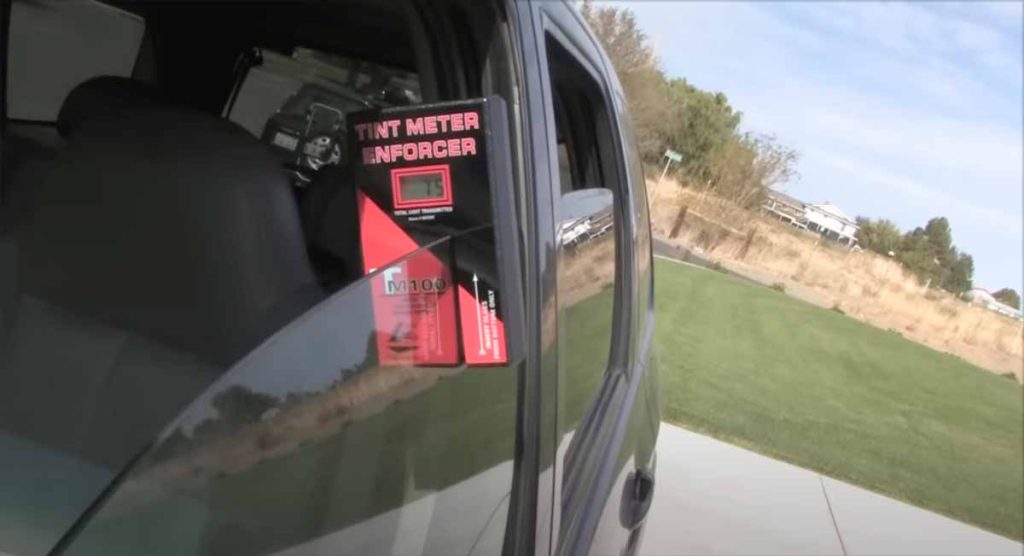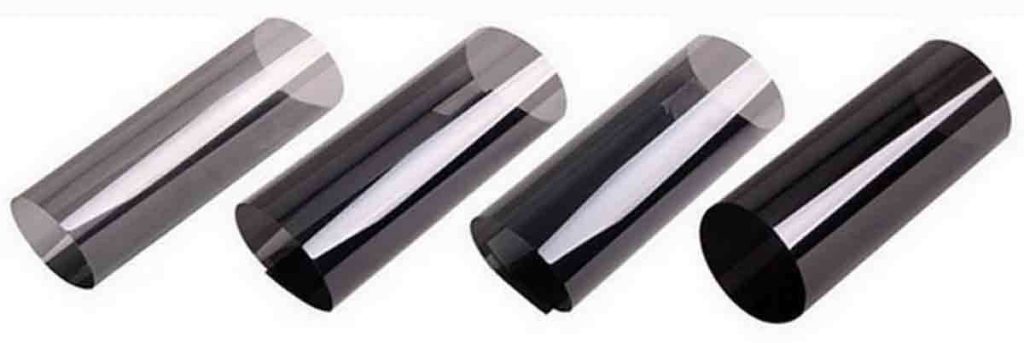Car window tints can provide privacy, comfort, and protection from the sun’s harmful UV rays. However, it’s essential to understand the laws governing tinted windows in your state. In this article, we’ll explore which states have made tinting windows illegal and the factors to consider before tinting your vehicle’s glass windows.

Factors to consider
- Visible Light Transmission (VLT): This refers to the percentage of visible light allowed through your car windows. Each state has different VLT requirements for the windshield, front side windows, rear side car windows, and rear car windows.
- State laws: The legality of window tint varies across states. Some states have stricter car window tinting regulations, while others are more lenient.
States where tinted car windows are illegal
To understand the legality of car window tinting, we’ve divided states into three categories: strict, moderate, and lenient.
States with strict CAR WINDOW TINT laws
California: The Golden State has stringent its car window tint laws, especially for the front side windows, which must have a minimum VLT of 88%. No car window tint is allowed on the windshield except for a 4-inch strip at the top.
Delaware: Delaware mandates a minimum VLT of 70% for the front side windows and no car window tint on the windshield, making it one of the strictest states.
States with moderate laws
New York: New York requires a minimum VLT of 70% for the front side windows, and a 6-inch strip is allowed on the windshield. However, the rear windows can be tinted as dark as desired.
Illinois: The Land of Lincoln allows a VLT of 35% for all windows except the windshield, which can only have a 6-inch strip at the top.
States with lenient laws
Florida: The Sunshine State permits a VLT of 28% for the front side windows, 15% for the rear side windows, and 15% for the rear window. The windshield can have a non-reflective tint above the manufacturer’s AS-1 line.
Texas: In Texas, a VLT of 25% is allowed for the front side windows, and any level of darkness is permissible for the rear side windows and rear window. The windshield can have a tinted strip above the AS-1 line.
List of Visible Light Transmission (VLT) Percentage per state.
* Please note that this information is accurate as of February 2023 and may be subject to change.
Alabama: 32%
Alaska: 70%
Arizona: 33%
Arkansas: 25%
California: 70%
Colorado: 27%
Connecticut: 35%
Delaware: 70%
Florida: 28%
Georgia: 32%
Hawaii: 35%
Idaho: 35%
Illinois: 35%
Indiana: 30%
Iowa: 70%
Kansas: 35%
Kentucky: 35%
Louisiana: 40%
Maine: 50%
Maryland: 35%
Massachusetts: 35%
Michigan: No specific percentage (4-inch border from the top allowed)
Minnesota: 50%
Mississippi: 28%
Missouri: 35%
Montana: 24%
Nebraska: 35%
Nevada: 35%
New Hampshire: No specific percentage (6-inch border from the top allowed)
New Jersey: No specific percentage (allowed only on top 6 inches of the windshield)
New Mexico: 20%
New York: 70%
North Carolina: 35%
North Dakota: 50%
Ohio: 50%
Oklahoma: 25%
Oregon: 35%
Pennsylvania: 70%
Rhode Island: 70%
South Carolina: 27%
South Dakota: 35%
Tennessee: 35%
Texas: 25%
Utah: 43%
Vermont: No specific percentage (allowed only on top 6 inches of the windshield)
Virginia: 50%
Washington: 24%
West Virginia: 35%
Wisconsin: 50%
Wyoming: 28%
Remember to check with your state’s current regulations, as these percentages may change over time.
Medical exemptions
In some states, medical exemptions are available for individuals who require darker tints due to specific medical conditions. These exemptions typically require a physician’s certification and may need to be renewed periodically.
Consequences of illegal window tinting
Having illegal window tint can lead to various consequences, including legal ramifications and safety concerns.
Legal Ramifications
Fines and penalties: Drivers with illegal window tinting may face fines, penalties, or even a court summons, depending on the state’s laws.
Vehicle inspection and removal: In some cases, drivers may be required to remove the illegal tint immediately or have their vehicle re-inspected after tint removal.
Safety concerns
Reduced visibility: Dark window tinting can reduce visibility for the driver, especially during nighttime or adverse weather conditions, increasing the risk of accidents.
Impact on accidents: In case of a collision, the tinted windows may hinder emergency responders’ ability to assess the situation or provide assistance to the vehicle’s occupants.

Choosing legal window tinting
To avoid legal and safeness issues, it’s crucial to choose window tinting that complies with your state’s laws. Consult a professional window tint installer who is familiar with the regulations in your area and can help you select the appropriate tint for your vehicle.
Understanding your state’s car window tinting laws is essential to avoid legal issues and ensure your safety on the road. While some states have stricter laws, others are more lenient, and medical exemptions may be available in certain cases. Be sure to consult a professional when choosing window tint for your vehicle, and always prioritize safety over aesthetics.
Emotional Impact of Car Window Tint Laws
It’s undeniable that window tint laws can evoke strong emotions in drivers. After all, your vehicle is a personal space where you may want to feel secure and comfortable. Your window tint can provide privacy, protect you from the sun’s harmful rays, and even give your vehicle a sleek look. However, it’s essential to balance these emotional desires with the need to abide by the law and prioritize safety on the road.

Don’t Get Pulled Over by The Police!
Imagine the frustration of being pulled over by a law enforcement officer and receiving a ticket for illegal window tint. Not only can this be a costly experience, but it may also leave you feeling upset, embarrassed, and frustrated. Moreover, it can lead to unnecessary tension between you and the authorities.
Additionally, consider the fear and anxiety you might feel while driving with dark window tints during nighttime or adverse weather conditions. Reduced visibility can increase the risk of accidents, putting you and your loved ones in danger. No one wants to live with the guilt or regret of causing an accident due to illegal car window tint.
On the other hand, if you choose a legal window tint that complies with your state’s laws, you can enjoy peace of mind and confidence on the road. You’ll be able to drive without fear of being pulled over, fined, or facing other legal ramifications. Moreover, you’ll be contributing to a safer driving environment for yourself and others on the road.
Finally, while the desire for privacy and comfort is entirely understandable, it’s crucial to prioritize safety and legality when choosing to darken your car windows. Remember, the emotional satisfaction of abiding by the law and ensuring a safe driving experience far outweighs the temporary gratification of having your car windows tinted illegally. Make the right choice and consult a professional window tint installer to ensure compliance with your state’s laws, and enjoy the peace of mind that comes with it.

Choosing The Right Car Window Tinting Film
Car window tint films come in various types and qualities. Here’s an overview of the most common types, their features, and the quality they offer:
- Dyed Window Tinting Film: Dyed window tint film is an affordable option and is typically the lowest in quality among the different types. It consists of a polyester film with a layer of dye. This type of tint film offers a degree of privacy and can reduce glare, but it doesn’t provide the best heat rejection or UV protection. Over time, the dye may fade or turn purple due to sun exposure.
- Metalized Window Tint Film: Metalized tint films consist of a polyester film with a layer of metallic particles. These particles reflect heat and sunlight, providing better heat rejection and UV protection than dyed films. Metalized films are more durable and less prone to fading. However, they may interfere with electronic devices, such as GPS or cell phone signals, due to their metallic content.
- Hybrid Window Tint Film: Hybrid films combine the features of dyed and metalized films. They use a combination of dye and metallic particles to offer better heat rejection, glare reduction, and UV protection than dyed films while reducing the electronic interference associated with metalized films. Hybrid films provide a good balance of performance and affordability.
- Carbon Window Tint Film: Carbon films use a carbon particle-infused layer in their construction. They offer excellent heat rejection, glare reduction, and UV rays protection without the use of metallic particles, eliminating the risk of electronic interference. Carbon films are also known for their attractive matte finish and color stability, as they do not fade over time like dyed films.
- Ceramic Window Tint Film: Ceramic films are considered the highest quality and most advanced type of window film. They use a layer of ceramic nanoparticles to provide superior heat rejection, glare reduction, and UV rays protection without causing electronic interference. Ceramic films are durable, fade-resistant, and offer the best optical clarity among all types of tint films. However, they are also the most expensive option.
When choosing a car window tint film, consider your budget, desired appearance, and specific needs like heat rejection, UV rays protection, and electronic device compatibility. It’s essential to select a reputable installer to ensure proper installation and to comply with your state’s window tint regulations.
FAQs
-
Can I have tinted windows if I have a medical condition?
Some states offer medical exemptions for individuals who require darker tints due to specific medical conditions. Consult your state’s laws and your physician to determine if you qualify for an exemption.
-
How can I find out my state’s window tint laws?
You can research online, consult a professional window tint installer, or contact your local Department of Motor Vehicles (DMV) for information on your state’s tint laws.
-
Can I be pulled over just for having tinted windows?
Yes, law enforcement officers can pull you over if they believe your window tints violate the state’s laws. They may use a tint meter to measure your windows’ VLT.
-
Are there any federal laws governing window tints?
No, there are no federal laws governing window tints. Each state has its own regulations, and it’s important that you are aware of the laws in your county or state.
-
Can I get a ticket for illegal window tints in a different state?
Yes, you can be ticketed for illegal window tints if you’re driving in a state with stricter laws than your home state. It’s essential to understand and comply with tint laws when traveling between states.




